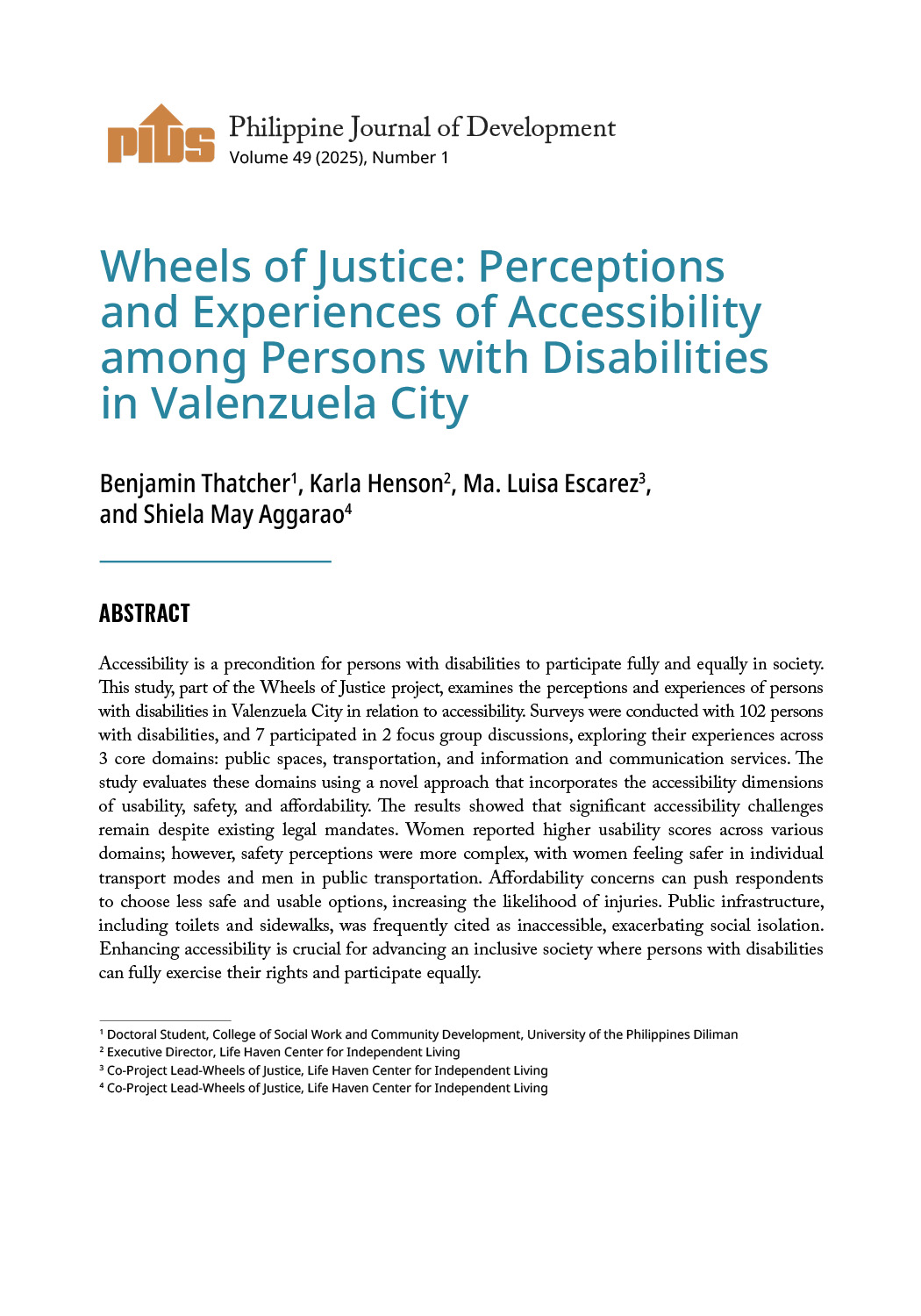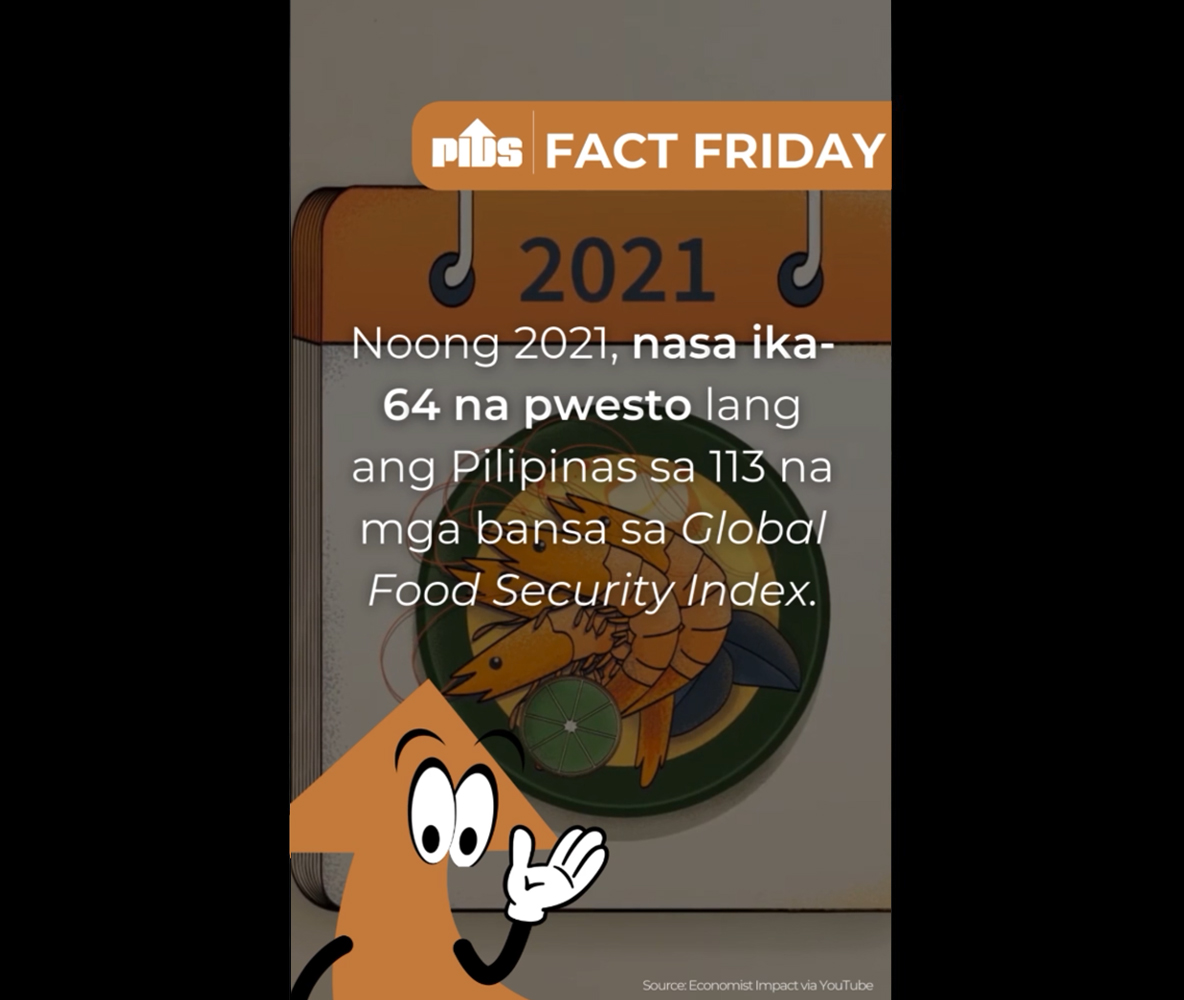A government think tank said that boosting productivity is key to end hunger in the Philippines as Filipinos may not be able to afford nutritional food by 2030 if the current economic trends continue.
In the study titled “Will Food Be Affordable to Filipinos by 2030? Alternative Expenditure Policies toward Ending Hunger by 2030,” by Philippine Institute for Development Studies (PIDS) economists Senior Research Fellow Roehlano Briones, Howarth Bouis, Imelda Angeles-Agdeppa, Isabel Espineli, and Ma. Lynell Maniego, they emphasized that prioritizing productivity and embracing a holistic approach can help the Philippines take decisive steps towards achieving the ambitious goal of ending hunger by 2030.
The authors posited that reduced affordability of healthy diets will “eventually affect nutritional status of individuals.”
They said that while many households can still secure sufficient calories, Vitamin A deficiencies can persist. This reduced nutrient intake of families and children could potentially result to stunting or wasting, leading to chronic or acute malnutrition.
Food inflation, which escalated beginning 2022 and peaked at 8.6 percent in February 2023, was the major economic trend cited by the study.
It highlighted the surge in domestic rice price inflation especially from March 2019 to July 2023, attributed to the effectivity of the Rice Tariffication Law and India's ban of non-Basmati rice exports in March 2019, and the rise in the benchmark price of Thai rice by 14 percent and Vietnam rice by 22 percent from July to September.
From this end, the authors said that target interventions that are strategically focused on vulnerable groups and key commodities may be valuable.
“Despite the lower price of rice in a Subsidy scenario, about 45 percent of calorie availability of Filipinos already obtained from non-cereal sources, hence policies that focus on just the key staple may be insufficient to make a serious dent in the size of total calorie intake,” the authors explained.
Overall, the study concluded that the national government must invest in broad-based productivity across the entire food system, alongside targeted interventions.
“Investing in general services like research and development and infrastructure is an effective strategy for achieving affordable diets. Long-term government investment in these areas, especially in agriculture, is seen as a more efficient approach to enhancing food affordability and dietary quality,” they said.
The study added that maintaining economic growth within the range of five to six percent may improve dietary quality for Filipinos.
A government think tank said that boosting productivity is key to end hunger in the Philippines as Filipinos may not be able to afford nutritional food by 2030 if the current economic trends continue.
In the study titled “Will Food Be Affordable to Filipinos by 2030? Alternative Expenditure Policies toward Ending Hunger by 2030,” by Philippine Institute for Development Studies (PIDS) economists Senior Research Fellow Roehlano Briones, Howarth Bouis, Imelda Angeles-Agdeppa, Isabel Espineli, and Ma. Lynell Maniego, they emphasized that prioritizing productivity and embracing a holistic approach can help the Philippines take decisive steps towards achieving the ambitious goal of ending hunger by 2030.
The authors posited that reduced affordability of healthy diets will “eventually affect nutritional status of individuals.”
They said that while many households can still secure sufficient calories, Vitamin A deficiencies can persist. This reduced nutrient intake of families and children could potentially result to stunting or wasting, leading to chronic or acute malnutrition.
Food inflation, which escalated beginning 2022 and peaked at 8.6 percent in February 2023, was the major economic trend cited by the study.
It highlighted the surge in domestic rice price inflation especially from March 2019 to July 2023, attributed to the effectivity of the Rice Tariffication Law and India's ban of non-Basmati rice exports in March 2019, and the rise in the benchmark price of Thai rice by 14 percent and Vietnam rice by 22 percent from July to September.
From this end, the authors said that target interventions that are strategically focused on vulnerable groups and key commodities may be valuable.
“Despite the lower price of rice in a Subsidy scenario, about 45 percent of calorie availability of Filipinos already obtained from non-cereal sources, hence policies that focus on just the key staple may be insufficient to make a serious dent in the size of total calorie intake,” the authors explained.
Overall, the study concluded that the national government must invest in broad-based productivity across the entire food system, alongside targeted interventions.
“Investing in general services like research and development and infrastructure is an effective strategy for achieving affordable diets. Long-term government investment in these areas, especially in agriculture, is seen as a more efficient approach to enhancing food affordability and dietary quality,” they said.
The study added that maintaining economic growth within the range of five to six percent may improve dietary quality for Filipinos.












